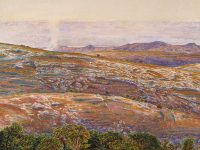
Massive commercialisation of the first painting sprays coincided in time with the emergence of contemporary graffiti. In 1970, Cornbread had covered Philadelphia with his name. At the same time, Taki 183 was doing the same in New York. Thanks to the metro, his signature could soon be found throughout Manhattan. The New York Times published an article about Taki 183 that elevated him to icon category. He was imitated by hundreds of young people around the world. Graffiti would later become the phenomenon we know today.
In addition to the artistic and vandalistic drive that led those young people to paint on their urban environment, the recent aerosol technology, the science of acrylic painting, and the mural painters who preceded them were decisive.
The development of acrylic painting at the beginning of the twentieth century, initially conceived for practical uses and with a marked industrial character, entered the world of art. In the 1920s, a group of Mexican painters, especially Orozco, Siqueiros, and Rivera, wanted to paint large murals for public buildings. They needed a paint that would remain stable outdoors and dry quickly. This was impossible using familiar techniques such as oil painting or fresco. What they needed had existed for a few years, but until then it had never been used as a vehicle for pigments: acrylic polymers.
«Recent aerosol technology, the science of acrylic painting, and the mural painters who preceded them were decisive for the emergence of contemporary graffiti»
Acrylic polymers consist of acrylic acid units. What we colloquially call acrylic paint is an emulsion of acrylic polymers and water in which the pigments, the substances responsible for colour, are contained. Oil painting takes days to dry, it is a slow drying process that happens by oxidation. Conversely, acrylic paint dries in minutes. What happens is that the water it contains evaporates and once this happens, no other physical or chemical change takes place. This means that the artist can repaint and apply as many coats of paint as desired on the same day.
The next great outdoors-painting invention did not take long to arrive. In 1929, the Norwegian chemical engineer Erik Rotheim invented the aerosol. At first, aerosols were used as insecticides. It wasn’t until the 1950s that aerosol manufacturers came up with the idea of spray painting, mainly to paint household appliances simply and professionally.
Paint sprays consist of two phases: acrylic paint and propellant. Acrylic paint contains solvents that guarantee immediate drying and fluidity. The propellant is usually a hydrocarbon that is under pressure in a liquid state inside the aerosol. This is why it is necessary to shake the spray before painting. When we do this, we hear a ball hitting the walls of the container so that the two phases mix. Once we press the nozzle, a mixture of paint and propellant comes out. The propellant evaporates instantly and the paint is fixed on the surface.
The spray brands that were first used in graffiti were mainly Krylon and Felton. Colours and finishes were very limited. In the 1990s, in view of the growing demand, the leading Spanish company in graffiti products was founded: Montana Colors.
Graffiti has not stopped evolving. Their history can be explored from the prism of science and technology. However, the history of graffiti is first and foremost art history.





